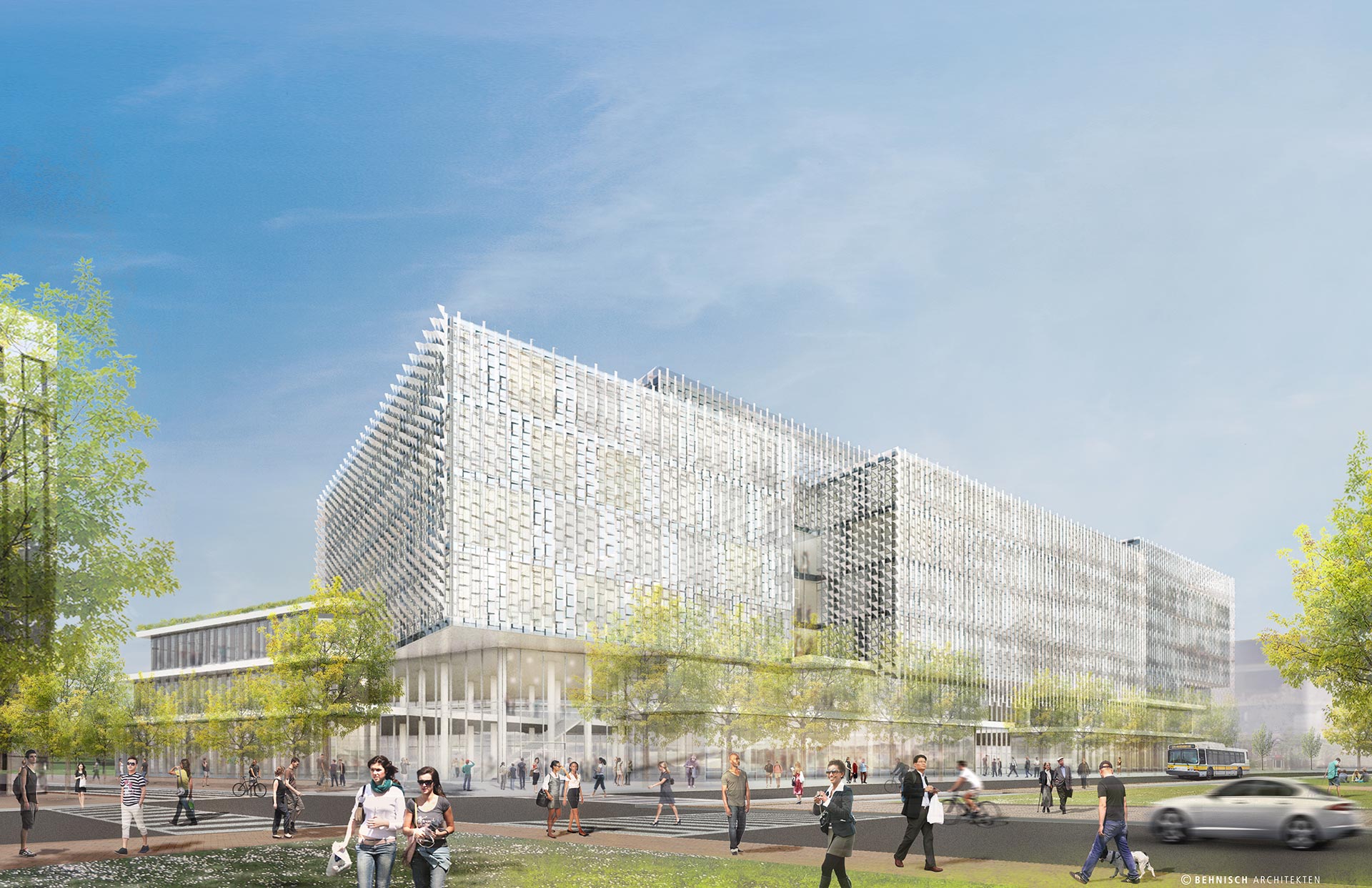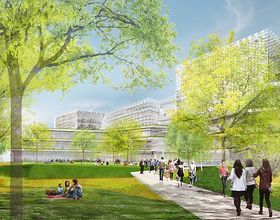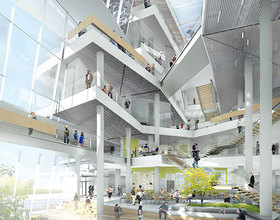HARVARD UNIVERSITY SCIENCE AND ENGINEERING COMPLEX
-
The proposed Science and Engineering Complex (SEC), located on Harvard University’s emerging Allston campus, integrates one of the country’s most diverse and exciting engineering programs into a single 497,000-square-foot structure. The new facility establishes a strong precedent for the development of outdoor space, street activation, and integration with larger public space networks, as described by the University’s Institutional Master Plan, which was approved in 2013. Set to be built on top of the existing foundation of a previously-designed life sciences complex that was suspended in 2008, it will accommodate teaching and research laboratories, classroom space, faculty and staff offices, and a host of amenity spaces.
As the primary home of the John A. Paulson School of Engineering and Applied Sciences (SEAS), the state-of-the-art complex defines a new series of environments that support SEAS’ profound commitment to interdisciplinary collaboration both in teaching and research, and exploits these qualities to create vibrant public spaces at a variety of scales throughout the building.
The SEC stretches more than five hundred feet along Western Avenue and is situated on the northern one-third of the overall site. The massing of the building forms a new landscaped courtyard space suitable for outdoor recreation and events towards the site’s center. The building is expressed as a series of floating, highly flexible research boxes above a two-story transparent plinth comprised of the more public, active elements of the program. This plinth adopts an architectural language of terracing elements as it reaches south to define the courtyard, establishing a building scale that respects the adjacent residential fabric. Organizationally, the building follows the massing logic, with classrooms, teaching labs, and amenity spaces occupying the lower plinth floors in order to take advantage of proximity to the street and courtyard, while research labs in the upper volumes maintain appropriate levels of solitude and security. Additional teaching spaces, fabrication shops, core research facilities, and a loading dock occupy the below-grade levels. All six above-grade and both below-grade levels are connected vertically by a central atrium space facing south toward the courtyard, which delivers daylight to all floors and serves as the communicative heart of the complex. Smaller distributed atria punctuate other areas of the building away from the atrium and define more local neighborhood groupings.
The façade design calibrates the scale of the SEC, creates an identity for the complex, and plays a crucial role in the energy performance and occupant comfort in the building. All three façade systems incorporate operable vents for natural ventilation and require stringent levels of thermal performance to maximize energy savings. In addition to the performative quality of the facades, the SEC integrates a highly progressive sustainability agenda.
Photo credits: Behnisch Architekten
1870 Projects








